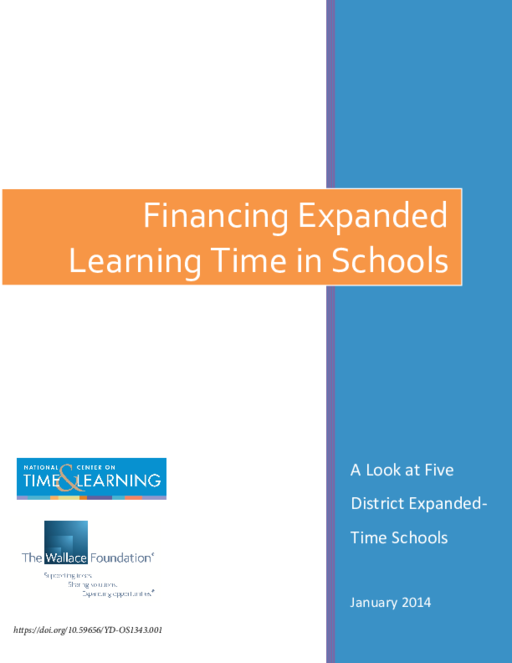Breadcrumb
- Wallace
- Reports
- Financing Expanded Learning Time...
Financing Expanded Learning Time in Schools
A Look at Five District Expanded-Time Schools

Overview
More
Less
- Author(s)
- Claire Kaplan, David A. Farbman, Sharon Deich, and Heather Clapp Padgette
- Publisher(s)
- National Center on Time & Learning
Summary
The number of schools with expanded school days is on the rise. But schools still often face significant constraints in their efforts to introduce expanded learning time, especially when it comes to financing and sustaining the increased costs these efforts involve. This report offers brief case studies of five different models for funding an expanded school day in district schools. By examining the funding sources, along with the challenges and opportunities associated with each model, the report provides a valuable look at how schools and districts are paying for expanded learning time and the benefits of such programming. While, according to the report, there is substantial variation among the five schools in their funding sources and how they organize staffing and direct spending, the programming enhancements each school has put in place are fairly consistent across sites. They include having designated periods for intensive tutoring or other student support, the expansion of enrichment classes and activities, and more dedicated time for teacher collaboration and professional development.

